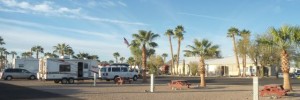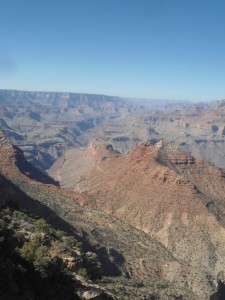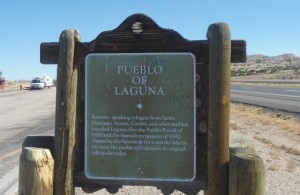
November 2, 2014 – Lisa’s Mom Sylvia flew home from San Diego this morning after 19 days on the road with us and almost 7000 km. Yes, Surrey to Kansas to Yuma and the San Diego, what a fun trip with folks to visit, sites to see and road to drive, some Interstate and lots of smaller highways. The last ten (10) were warm with the exception of San Diego, 95F (35C) was our max in Yuma, even locals were complaining.
After leaving Junction City we headed to Dodge City and were excited about the prospect of experiencing something like Virginia City in Nevada. Named after nearby Fort Dodge, the city is famous in American culture for its history as a wild frontier town of the Old West. Dodge City had more famous (and infamous) gunfighters working at one time or another than any other town in the West, many of whom participated in the Dodge City War of 1883. It also boasted the usual array of saloons, gambling halls, and brothels, including the famous Long Branch Saloon and China Doll brothel. For a time in 1884, Dodge City even had a bullfighting ring where Mexican bullfighters would put on a show with specially chosen longhorn bulls. Bat Masterson and Wyatt Earp were deputies in Dodge City, 1876. Sadly little remains from those days with only a reconstructed Museum Old Dodge City stands on some of the original site. We were disappointed and underwhelmed after the Virginia City experience.

The next day we headed southwest leaving Kansas behind, across northern Oklahoma and Texas panhandle into New Mexico seeing some prairie, wooded rolling hills, cattle in feed lots by the thousands and finally the mesas of New Mexico. We stayed at the Santa Rosa State Park. The first European settlement in the area was Aqua Negra Chiquita, “Little Black Water” in Spanish, in 1865. The name was changed in 1890 to Santa Rosa (Spanish for “Holy Rose”) referring to a chapel that Don Celso Baca (the founder of the city) built and named after both his mother Rosa and Saint Rose of Lima. The “Rosa” may also refer to the roses in the story of Our Lady of Guadalupe and is indicative of the Catholicism of the Spanish colonizers who settled in the area. Just as we were leaving Lisa sprained her ankle, a bad sprain, very painful for sure. The good news is the healing process is well on its way. This was a beautiful stop well worth the visit, $14.00 for a pull thru site with electricity, flush toilets and clean showers.

Arizona was the next destination after driving thru Albuquerque where my Great Grandparents on my Dad’s side (Welsh immigrants, Daniel & Annie Chapman) had landed from the east coast of the US by train and traveled north by covered wagon eventually to become trail, BC pioneers. Albuquerque was founded in 1706 as the Spanish colonial outpost of Ranchos de Alburquerque. Apparently present-day Albuquerque retains much of its historical Spanish cultural heritage. Albuquerque was a farming community and strategically located military outpost along the Camino Real. Spain established a presidio (military garrison) in Albuquerque in 1706. After 1821, Mexico also had a military garrison there. The town of Alburquerque was built in the traditional Spanish village pattern: a central plaza surrounded by government buildings, homes, and a church. This central plaza area has been preserved and is open to the public as a museum, cultural area, and center of commerce. It is referred to as “Old Town Albuquerque” or simply “Old Town.” Historically it was sometimes referred to as “La Placita” (little plaza in Spanish). On the north side of Old Town Plaza is San Felipe de Neri Church that was built in 1793, it is one of the oldest surviving buildings in the city. After a fuel stop we headed off to the Meteor Crater RV Park, nice park reasonably priced just 35 minutes or so east of Flagstaff, AZ.

Sylvia had always wanted to see the Grand Canyon, as did I, Lisa not so much (was never on her must do list). We set out about 8:00 am, stopped for groceries and fuel in Flagstaff then north we went to the Grand Canyon National Park. The Grand Canyon is 277 miles (446 km) long, up to 18 miles (29 km) wide and attains a depth of over a mile (6,000 feet or 1,800 meters).

U.S. President Theodore Roosevelt visited the Grand Canyon in 1903 and as an avid outdoorsman and staunch conservationist, he established the Grand Canyon Game Preserve on November 28, 1906. Livestock grazing was reduced, but predators such as mountain lions, eagles, and wolves were eradicated. Roosevelt added adjacent national forest lands and re-designated the preserve a U.S. National Monument on January 11, 1908. Opponents such as land and mining claim holders blocked efforts to reclassify the monument as a U.S. National Park for 11 years. However the Grand Canyon National Park was finally established as the 17th U.S. National Park by an Act of Congress signed into law by President Woodrow Wilson on February 26, 1919.

We had a number of stops and walk abouts as we traveled along the south rim road east to west. Very impressive I must say, increasingly, Lisa became less and less enthusiastic about the looking over the edge part (she really never got that close). Everyone was happy to find the Grand Canyon Village RV Park, far away from any cliff side views. Big park probably over 150 sites sitting at about 6000 feet, perhaps more. All of us will remember the Grand Canyon it was quite an experience.

The next morning we stopped at the café for breakfast the headed south for southern Arizona as we were coming near the end of our road trip. It was only then that we discovered we were running an hour ahead of everyone else. Still not sure how that happened, I think something about Arizona not prescribing to daylight savings time. Variety was the order of the day with mountainous passes, valleys, flat prairie and everything in between before reaching our destination in Quartzite, where upwards of 100,000 Snowbird RVers have spent their winters in the past. Quartzite has been a rockhound’s paradise since the 1960s. We stayed at the Holiday Palms RV Park (would recommend) and ate at a local eatery next door, great Pizza and interesting Karaoke crowd, all entertaining.

Day 18 and we were headed to El Centro, CA (we thought) with a stop in Yuma for groceries and fuel. At about 50 miles north of Yuma on Hwy 95 we were passed (oncoming) by a Truck/Camper with duals. At the very moment they passed my driver’s window shattered, loudly as they do and yes I am covered with glass bits. Very exciting for sure travelling at 60 miles an hour in an area where they are at that very moment testing out the bombing range. We stopped shortly thereafter, cleaned up what glass we could, made a call to ICBC then off again to Yuma with other priorities. As fate will have it just as we driving into Yuma we were passed by a pickup truck with many windshields in the back, Frank & Son Auto Glass Repair it said on the back, Lisa took a photo and I made a call (stopped of course). Jorge (AKA Frank Jr.) was at the truck where he scanned the QR Code on the truck and ordered the new window, wow!, and we had only been in Yuma 5 minutes. Jorge took us back to the shop, parked out back behind the gates and he took me to the airport to rent a car, wonderful service to say the least. We went to old Historic Yuma, did some shopping and had dinner at the Olive Garden, this ended up being a great day in Yuma. The next morning Frank Sr. put the window in after it had arrived and we were on our way. I cannot say enough about Frank & Son, they were great, very friendly, accommodating and understanding. Now we can say we stayed at a gated community in Yuma! Thank you Frank & Jorge! I can only hope ICBC will be so understanding, last I heard they wanted photos so they could provide an estimate for the repairs and a decision on the claim could take 2 weeks. We are currently out of pocket nearly $800.00 (Repair & Rental), we will see how this goes.


We arrived at our favourite RV Park in San Diego, Oak Creek Resort on Friday and yesterday took Sylvia to the Ramada by the Airport. We did manage to get a stop and visit at Old Town San Diego where thousands were celebrating Day of the Dead (Dia de los Muertos). Now we start the preparation for our 38 Day Baja Tour with our new group on Friday, November 7th.
As always we keenly look forward to our return to Baja for the first tour of the season.

They were the best!
Did you know?
The known history of the Grand Canyon area stretches back 10,500 years, when the first evidence of human presence in the area is found. Native Americans have inhabited the Grand Canyon and the area now covered by Grand Canyon National Park for at least the last 4,000 of those years. Ancestral Pueblo peoples, first as the Basketmaker culture and later as the more familiar Pueblo people, developed from the Desert Culture as they became less nomadic and more dependent on agriculture. A similar culture, the Cohonina, also lived in the canyon area. Drought in the late 13th century likely caused both groups to move on. Other people followed, including the Paiute, Cerbat, and the Navajo, only to be later forced onto reservations by the United States Government.

In September 1540, under direction by conquistador Francisco Vásquez de Coronado to find the fabled Seven Cities of Gold, Captain Garcia Lopez de Cardenas led a party of Spanish soldiers with Hopi guides to the Grand Canyon. The report indicates that they greatly misjudged the proportions of the gorge. On the one hand, they estimated that the canyon was about three to four leagues wide (13–16 km, 8–10 mi), which is quite accurate. At the same time, however, they believed that the river, which they could see from above, was only 2 m (6 ft) wide (in reality it is about a hundred times wider). Being in dire need of water, and wanting to cross the giant obstacle, the soldiers started searching for a way down to the canyon floor that would be passable for them along with their horses. After three full days, they still had not been successful, and it is speculated that the Hopi, who probably knew a way down to the canyon floor, were reluctant to lead them there.

As a last resort, Cárdenas finally commanded the three lightest and most agile men of his group to climb down by themselves (their names are given as Pablo de Melgosa, Juan Galeras, and an unknown, third soldier). After several hours, the men returned, reporting that they had only made one third of the distance down to the river, and that “what seemed easy from above was not so”. Furthermore, they claimed that some of the boulders which they had seen from the rim, and estimated to be about as tall as a man, were in fact bigger than the Great Tower of Seville (which then was the tallest building in the world, measuring 82 metres, or 270 feet). Cárdenas finally had to give up and returned to the main army. His report of an impassable barrier forestalled further visitation to the area for two hundred years.

Only in 1776 did two Spanish Priests, Fathers Francisco Atanasio Domínguez and Silvestre Vélez de Escalante travel along the North Rim again, together with a group of Spanish soldiers, exploring southern Utah in search of a route from Santa Fe, New Mexico to Monterey, California. Also in 1776, Fray Francisco Garces, a Franciscan missionary, spent a week near Havasupai, unsuccessfully attempting to convert a band of Native Americans. He described the canyon as “profound”.
Today, Grand Canyon National Park receives about five million visitors each year, a far cry from the annual visitation of 44,173 in 1919.



